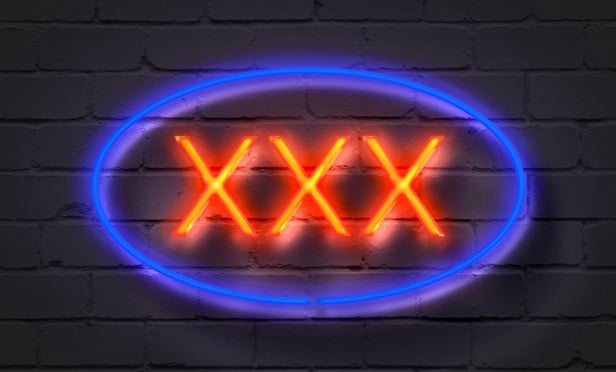Features

Negotiating Key Points in Literary Agent-Author Relationships
Several of the same concepts that are in agreements between performing artists and managers also apply to agreements between authors and literary representatives.
Features

New-Wave Legal Challenges for Bitcoin and Other Cryptocurrencies
As the adoption of cryptocurrencies — or digital currencies that are encrypted for security — spreads throughout the business and financial sectors, so too do the concerns that lack of regulation render the new-age currency susceptible to fraud, manipulation, and to being used as a vehicle for money laundering. Nevertheless, recent efforts by U.S. enforcement agencies to apply and enforce financial regulations indicate that cryptocurrency-based transactions will be under greater scrutiny than ever before.
Features

How Defendant's Prior Conduct Can Impact Copyright Cases
In the context of a copyright case, a defendant's prior bad acts and prior conduct are more useful to a plaintiff than is typical in civil litigation. In many instances, copyright infringement lawsuits are brought against defendants who have been sued before for infringement, or related misconduct, or who have been the subject of allegations or informal complaints, or who simply have experience in copyright matters.
Features

Adult Use Zoning in New York
New York City's 2001 ordinance regulating adult uses has been the subject of litigation for more than 15 years. In September, the Court of Appeals put an apparent end to the litigation by denying reargument of its June decision upholding the ordinance.
Features

Defamation and the Disgruntled Defendant
<b><i>Anti-SLAPP Legislation and Defamation Claims</i></b><p><b><i>Part Two of a Two-Part Article</i></b><p>After defendants have established that their allegedly defamatory statements were made in furtherance of their right of free speech or petition under the United States Constitution or the California Constitution in connection with a public issue, the second thing that courts must question when a defendant seeks dismissal through an anti-SLAPP motion is whether the claimant has carried his burden of establishing a probability of success on the merits of his claim.
Features

SCOTUS Decision on Mandatory Employment Arbitration Agreements Will Have Far-Reaching Implications
On Oct. 2, 2017, the Supreme Court was set to hear argument as to whether class action waivers in arbitration agreements are valid and enforceable. Thirty-six amicus briefs were submitted to the Supreme Court on this issue, underscoring that regardless of the Court's decision, there will be sweeping implications for both employers and employees.
Features

The Dark Web
The goals of this article are: 1) to provide a basic outline of the structure of the Web and to provide some insight into the purpose for and content housed on each level; and 2) to give some practical tips on preventing your company's data from ending up on the Dark Web.
Features

Engaging Lawyers in a Follow-Up Initiative: A Case Study
A look at a recent group coaching initiative at a major law firm. Having had success with group coaching in the past, the CMO established a six-month pilot program and chose eight attorneys to participate. Here's what happened.
Features

<i>Legal Tech</i><br>Sedona Conference Releases Finalized Third Edition of the Sedona Principles
<b><i>The Often-Cited e-Discovery Guidelines Were 'Put Through the Ringer,' and the Result Is Updated Principles and Expanded Commentary for a New Technological Age</b></i><p>Outside of guiding rules of evidence and procedure, the Sedona Principles are perhaps the most often-cited guidelines for handling electronic discovery today. But the Principles had not seen a full-scale rewrite since 2007. Since that time, electronic data sources have exponentially increased and e-discovery itself has morphed into a $10 billion business. The wait, though, has come to a close.
Features

Read This Before You Set Your 2018 Billing Rates
Setting the next year's billing rates follows a simple formula at most firms: last year's rate plus a common percentage increase across all lawyer cohorts. A more disaggregated approach is needed -- firms should set higher percentage increases for senior lawyers and lower increases for junior lawyers.
Need Help?
- Prefer an IP authenticated environment? Request a transition or call 800-756-8993.
- Need other assistance? email Customer Service or call 1-877-256-2472.
MOST POPULAR STORIES
- Removing Restrictive Covenants In New YorkIn Rockwell v. Despart, the New York Supreme Court, Third Department, recently revisited a recurring question: When may a landowner seek judicial removal of a covenant restricting use of her land?Read More ›
- The Brave New World of Cybersecurity Due Diligence in Mergers and Acquisitions: Pitfalls and OpportunitiesLike poorly-behaved school children, new technologies and intellectual property (IP) are increasingly disrupting the M&A establishment. Cybersecurity has become the latest disruptive newcomer to the M&A party.Read More ›
- Bankruptcy Sales: Finding a Diamond In the RoughThere is no efficient market for the sale of bankruptcy assets. Inefficient markets yield a transactional drag, potentially dampening the ability of debtors and trustees to maximize value for creditors. This article identifies ways in which investors may more easily discover bankruptcy asset sales.Read More ›
- A Lawyer's System for Active ReadingActive reading comprises many daily tasks lawyers engage in, including highlighting, annotating, note taking, comparing and searching texts. It demands more than flipping or turning pages.Read More ›
- Digital Dibs: Rival Views of Generative AI CopyrightsGAI platforms like ChatGPT and OpenAI often require very little human input, shattering this legal landscape's framework by posing a simple question: Who authored the material? We'll explore how two countries are answering this question in different ways.Read More ›
